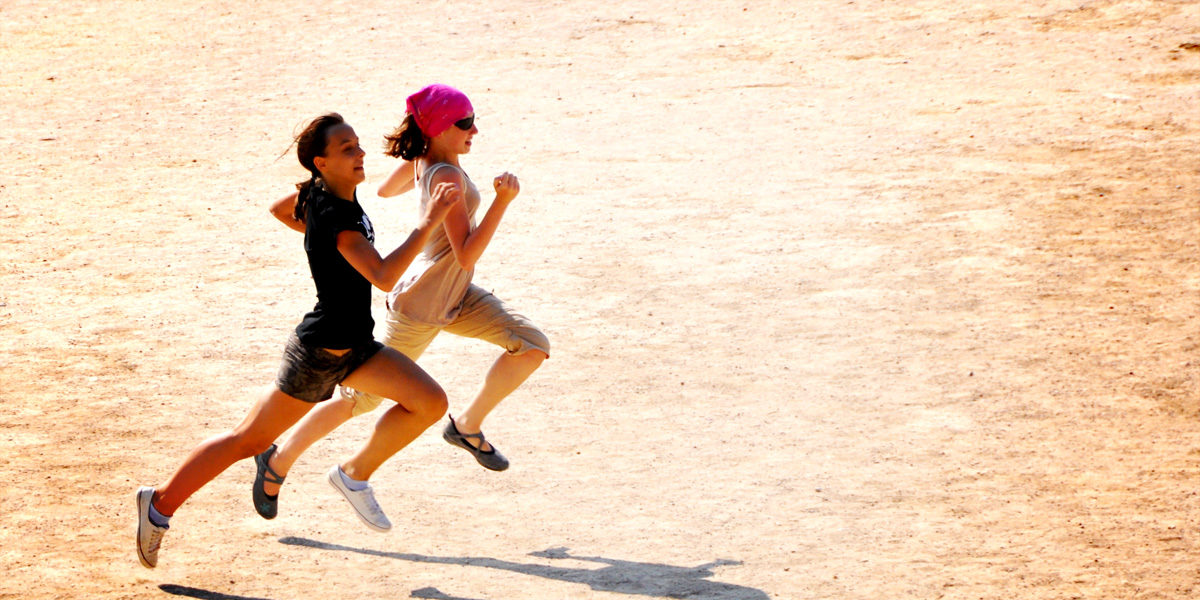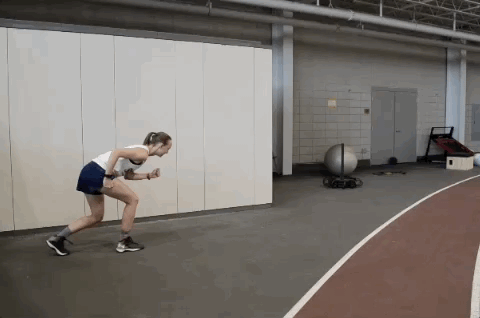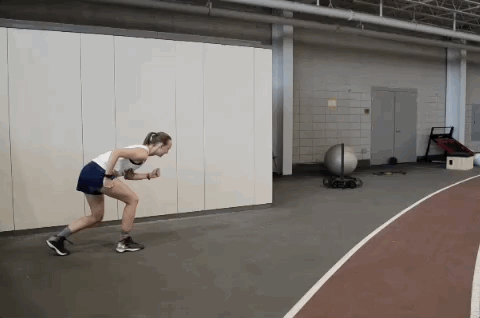 Photo by Julian Lim
Photo by Julian Lim
Cutting might be the most common movement in ultimate. On offense, on defense, even if you never touch the disc, you’re spending most of your time cutting back and forth across the field. Some players take to it naturally, others look noticeably more clumsy whenever they try to change directions. One thing nearly everyone has in common is that hardly anyone thinks about it. Practices spend a lot of time drilling when and where to cut, with hardly any time teaching how to cut.
Cutting can be broken into three phases: deceleration, change of direction, and acceleration. This article will also be split into three parts: acceleration, deceleration, and change of direction. I’ll map out progressive instruction that you can use to teach your team how to cut efficiently, powerfully, and safely. Hopefully, they’ll look a little less awkward on the field as well.
Part 1: Acceleration
Acceleration is all about putting as much force into the ground under/behind you as quickly as possible. This means using the full extent of as many muscles as you can recruit.
Exercise 1: Glute activation
Our largest muscle is our gluteus maximus (the butt), so if we start activating our glutes before we start sprinting, we’ll recruit it more quickly when we sprint. More recruitment → more force → faster movement. Some of my favorite glute activations are Single leg (SL) Hip Thrusts, SL Deadlifts (SLDL), and lunges. Throughout each exercise you want to focus on forcefully contracting your glutes, rather than your hamstrings.
Once you’re warmed up and glutes are activated, we start working on an explosive first step. This step is the most crucial, as it trains our body how to direct force in the most efficient manner. An improperly aligned foot or hip can spill energy to the side or vertical, and not allow us to go as quickly forward as we want.
Exercise 2: One-step starts
First, we get into a crouch stance (see table below). Granted, we rarely get to start a sprint from a perfect crouch in ultimate, but by teaching our body how to most efficiently move from this position, it’s going to default to those powerful movements even if we’re in a sub-optimal position.

From the crouch stance, we build up tension by keeping our weight forward and loading into our glutes and hamstrings on the lead leg. This is where our glute activation comes in handy. With our first step, we explode off our front leg, and drive our swing knee forward with the swing foot dorsiflexed (toe pointed upward). As you push off, your front leg should be straight from your hip, through the knees, to the ends of your toes for “triple extension”. The more straight that line is, the more force you’re putting into moving your body forward.
Don’t forget to include the arms. As the swing knee drives forward, the arm on that side should drive back. Then take your time walking back to the line to do it again. Each rep focus on pushing off the ground as hard and as quickly as you can, going for distance.
| Crouch Start | |
| Back | Neutral, head in line with spine |
| Front leg | ~90° knee angle |
| Rear leg | ~133° knee angle, shins parallel to ground |
| Arms | “Cheek to cheek” or “back pocket to eye socket” |
Exercise 3: Multiple-step starts

After a few reps of exploding off your lead leg, add the second, and eventually third step. Each leg is like a jackhammer or a piston, pounding into the ground, fully extending the body forward. Be strict on technique and strict on effort. No one learns how to increase their 100% if they’re only practicing at 90%.
I’ve found that going in three heats gives each athlete enough time to recover before the next rep. If you need to add more rest time, you can give corrections or demos between heats. Give your waiting athletes specific items to look for in their teammates to help them think more critically about proper technique.
Exercise 4: 20 meter sprints
Twenty meters is the point where many athletes’ shin angles are upright, and torsos are becoming more upright. It’s just a bit past the first seven steps, where 75% of the acceleration happens. If you focus on speed, many of them will naturally find a comfortable place for their torso to rise. Micromanaging it may cause more awkwardness than speed. Leave enough rest for full effort every time. One or two minutes should be good, but if their reps get slower you should add more rest time or cut down the reps.
| Exercise | Volume | Rest (rep/set) | Notes |
|---|---|---|---|
| Hip Bridges | 1 x 5/leg | Cue "squeeze your butt" to activate glutes. The more glutes are activated and hamstrings relaxed, the better. | |
| SLDL | 1 x 5/leg | Cue "squeeze your butt" to activate glutes. The more glutes are activated and hamstrings relaxed, the better. | |
| 1-Step Starts | 2 x 3/leg | 10 sec/30 sec | |
| 2-Step Starts | 2 x 2/leg | 10 sec/30 sec | |
| 3-Step Starts | 2 x 2/leg | 10 sec/30 sec | |
| Crouch sprints | 1 x 4 x 20m | 1 min |










Comments Policy: At Skyd, we value all legitimate contributions to the discussion of ultimate. However, please ensure your input is respectful. Hateful, slanderous, or disrespectful comments will be deleted. For grammatical, factual, and typographic errors, instead of leaving a comment, please e-mail our editors directly at editors [at] skydmagazine.com.